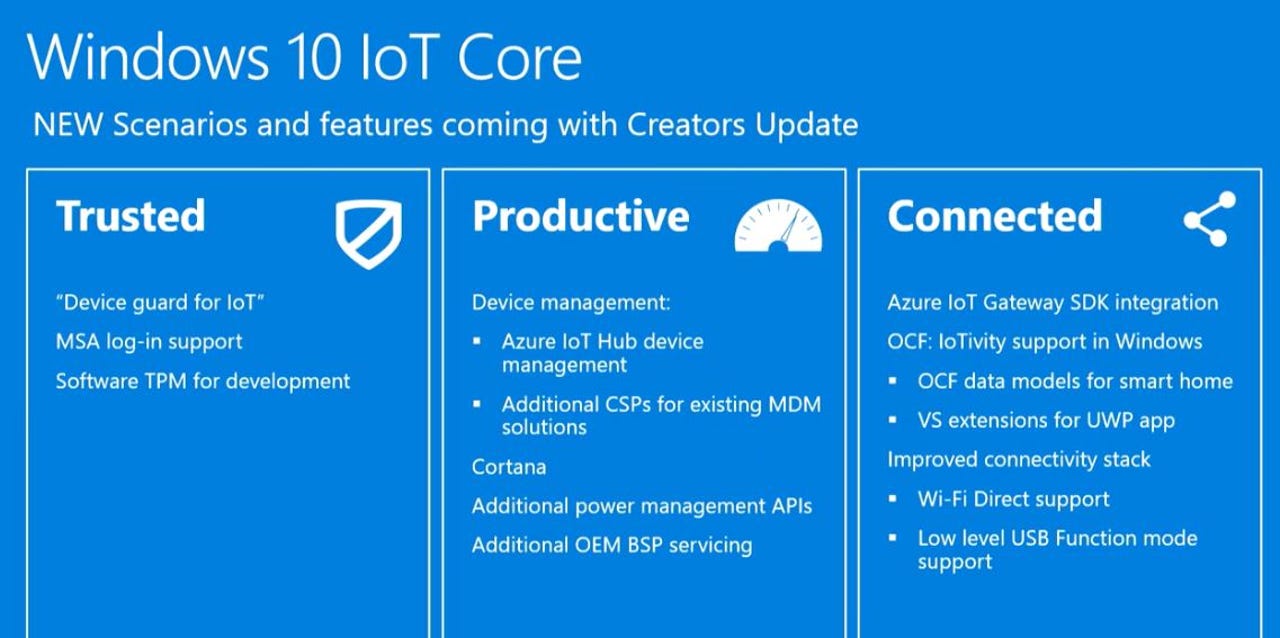What else is coming in Windows 10 IoT Core with the Creators Update?

Microsoft revealed last week that Cortana is coming to Windows 10 IoT core as part of the Creators Update release due in the Spring of 2017.
But there's more than just Cortana in that update, as officials told hardware makers last week at WinHEC 2016 in Shenzhen.
Here's a slide from a presentation titled "Windows 10 IoT: Build trusted, easy-to-manage and interoperable devices," which itemizes other features coming to that particular version of Windows 10 next year:

With the Creators Update, Microsoft is adding a number of features to the IoT version of Windows 10 that are similar, if not identical, to what's provided in some of its other Windows 10 variants.
Microsoft is adding a Device Guard security feature to Windows 10 IoT core, along with Microsoft Account log-in support; more device management and power-management capabilities; and Wi-Fi Direct support among other features.
During the WinHEC session, officials explained which types of "things" run which versions of Windows 10 IoT.
Windows 10 IoT Core is for smart devices. Windows 10 IoT Enterprise and Windows 10 IoT Mobile work on "industry devices." Sensors and other "things" that run firmware may work with Windows 10, but don't run it. There's also a version of Windows Server 2016 that's considered an IoT product and is for use in compute-intensive devices like digital surveillance and telco devices.
Windows 10 IoT Enterprise is the OEM version of Windows 10 Enterprise. It's for "purpose-built devices" that need a UI, such as industrial PCs, graphics-intensive digital signs and powerful edge gateways, officials said.
Windows 10 IoT Mobile is for ruggedized handheld devices that are typically used in warehouse backrooms, retail stores, etc. It includes the Windows 10 shell and can run Universal Windows Platform (UWP) apps.
Windows 10 IoT Core runs on Intel or ARM-based devices that require a smaller OS footprint. Devices running Windows 10 IoT Core can be headless or headed but in order to work with Cortana, will require displays. Smart refrigerators, thermostats, and headless gateways are examples of devices that would run Windows 10 IoT Core.
Microsoft's Windows 10 Creators Update's ship target is believed to be March 2017. Microsoft will likely update the IoT versions to Creators Update a few months after it releases the PC/mobile version.